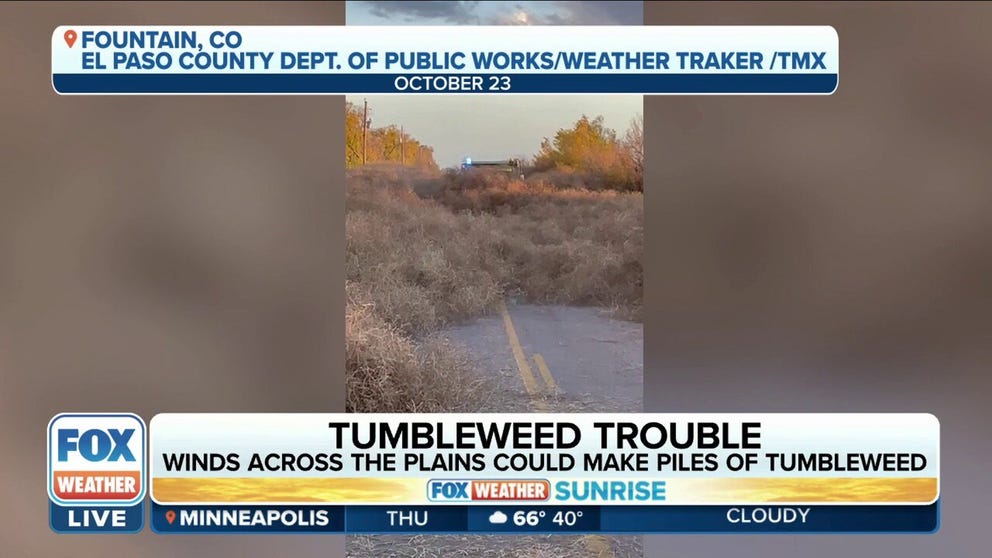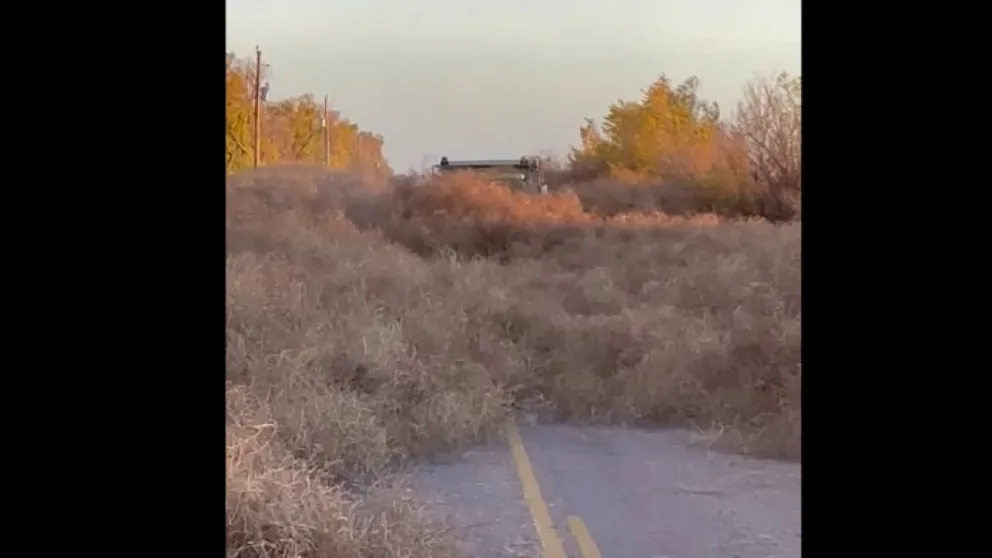Watch: Tumbleweeds take over Colorado highway
Tumbleweeds are most associated with the desert west and come from the Russian thistle plant. Typically, tumbleweed season can happen across the western U.S. twice a year.
Tumbleweeds are a problem across El Paso County
Jack Ladley, Acting Director for El Paso County Department of Public Works, talks about the trouble tumbleweeds can cause in their area.
COLORADO SPRINGS, Co. – Drivers experienced a traffic jam of a different kind in El Paso County, Colorado, recently as giant mounds of tumbleweeds rolled onto roads.
Video taken by the El Paso County Public Works Department on Oct. 23 showed the plant invasion piled as high as a truck. Lights from the vehicle are just barely peeping above the mound of tumbleweeds. A public works employee can be heard guiding the vehicle's driver through the matted mess.
Acting Director for El Paso County Department of Public Works Jack Ladley spoke to FOX Weather about the trouble tumbleweeds can cause in the area when the winds pick up and move around the invasive weeds.
Ladley said the tumbleweeds below were about 15 feet deep and taller than a county dump truck. However, Ladley said most drivers should not attempt to dry through a large pile of tumbleweeds.
Tumbleweeds take over Colorado road
Tumbleweeds covered a road in El Paso County, Colorado rising as high as a vehicle.
"If you come across that on a roadway do not try and drive through them," Ladley said. "A concern is these tumbleweeds are very dry, very brittle you try to push through them … the risk that you run is they lay up against a hot exhaust pipe and they catch fire."
Near Ellicott on Highway 94, another weather watcher recorded tumbleweeds piling on the side of the road as drivers maneuvered around the plant debris.
Tumbleweeds are most associated with the desert west and come from the Russian thistle plant. The bushy plant grows and flowers in the summer before drying out in autumn, according to Columbia University. When the plant breaks at the soil line, it becomes a tumbleweed, and the wind disperses the plant throughout the landscape. This spreads up to 250,000 seeds as the tumbleweed travels.
Tumbling traffic: Large tumbleweeds crowd Colorado highway
Weather watcher Tamie Robb recorded the large gathering of tumbleweeds on Highway 94 near Ellicott, Colorado.
Typically, tumbleweed turmoil can happen across the western U.S. twice a year in the spring and fall.
East coast beaches in Florida have also experienced impacts from plants closely related to the Russian thistle, according to the University of Florida. The non-invasive plant disturbs birds and sea turtle nests by taking over usually bare beach dunes.


